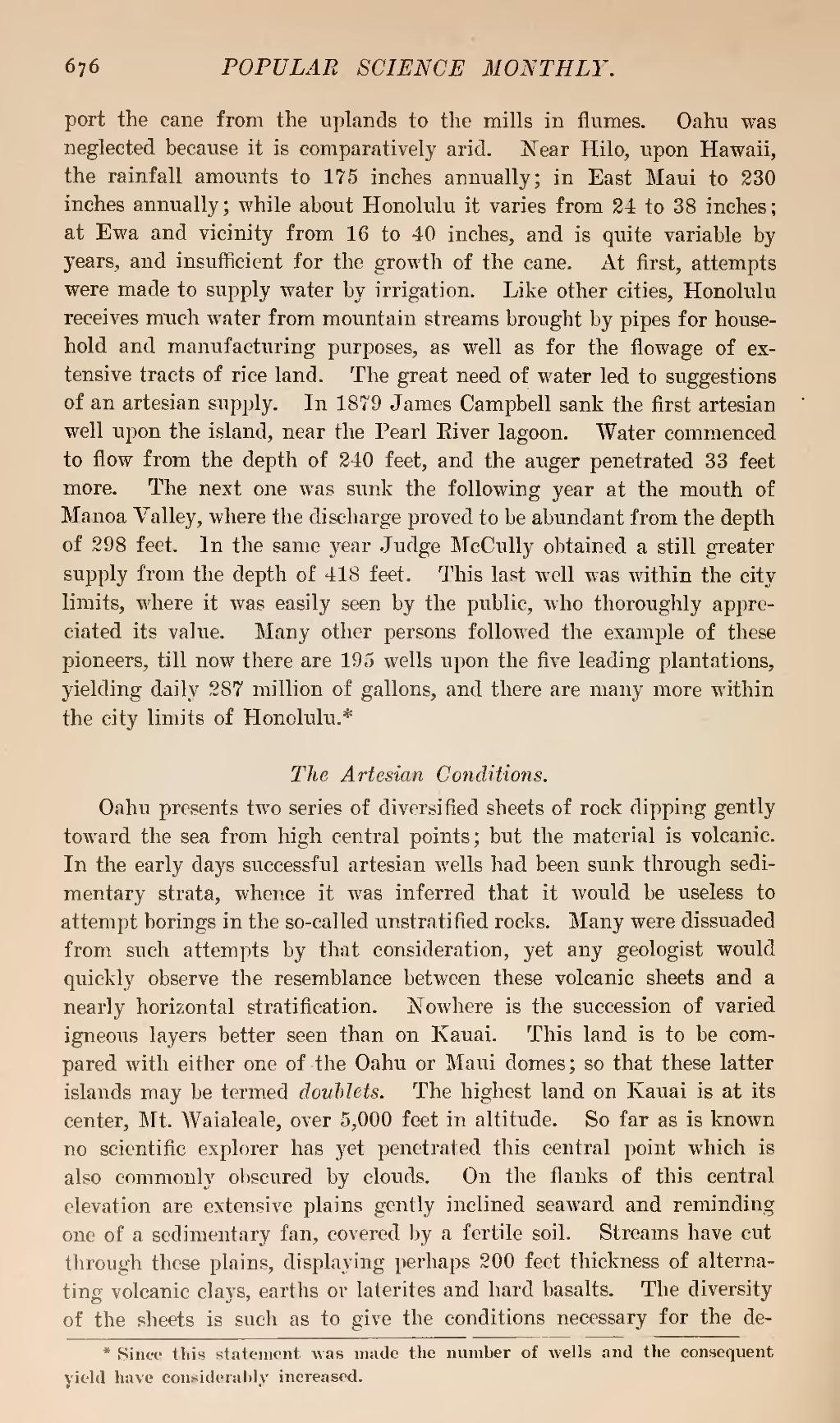port the cane from the uplands to the mills in flumes. Oahu was neglected because it is comparatively arid. Near Hilo, upon Hawaii, the rainfall amounts to 175 inches annually; in East Maui to 230 inches annually; while about Honolulu it varies from 24 to 38 inches; at Ewa and vicinity from 16 to 40 inches, and is quite variable by years, and insufficient for the growth of the cane. At first, attempts were made to supply water by irrigation. Like other cities, Honolulu receives much water from mountain streams brought by pipes for household and manufacturing purposes, as well as for the flowage of extensive tracts of rice land. The great need of water led to suggestions of an artesian supply. In 1879 James Campbell sank the first artesian well upon the island, near the Pearl River lagoon. Water commenced to flow from the depth of 240 feet, and the auger penetrated 33 feet more. The next one was sunk the following year at the mouth of Manoa Valley, where the discharge proved to be abundant from the depth of 298 feet. In the same year Judge McCully obtained a still greater supply from the depth of 418 feet. This last well was within the city limits, where it was easily seen by the public, who thoroughly appreciated its value. Many other persons followed the example of these pioneers, till now there are 195 wells upon the five leading plantations, yielding daily 287 million of gallons, and there are many more within the city limits of Honolulu.[1]
The Artesian Conditions.
Oahu presents two series of diversified sheets of rock dipping gently toward the sea from high central points; but the material is volcanic. In the early days successful artesian wells had been sunk through sedimentary strata, whence it was inferred that it would be useless to attempt borings in the so-called unstratified rocks. Many were dissuaded from such attempts by that consideration, yet any geologist would quickly observe the resemblance between these volcanic sheets and a nearly horizontal stratification. Nowhere is the succession of varied igneous layers better seen than on Kauai. This land is to be compared with either one of the Oahu or Maui domes; so that these latter islands may be termed doublets. The highest land on Kauai is at its center, Mt. Waialeale, over 5,000 feet in altitude. So far as is known no scientific explorer has yet penetrated this central point which is also commonly obscured by clouds. On the flanks of this central elevation are extensive plains gently inclined seaward and reminding one of a sedimentary fan, covered by a fertile soil. Streams have cut through these plains, displaying perhaps 200 feet thickness of alternating volcanic clays, earths or laterites and hard basalts. The diversity of the sheets is such as to give the conditions necessary for the de-
- ↑ Since this statement was made the number of wells and the consequent yield have considerably increased.
